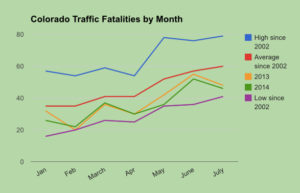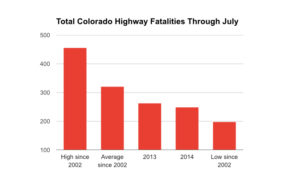“You won’t recognize Canada when I’m through with it” -Stephen Harper
Here are just 4 of the many ways Stephen Harper is drastically changing Canada in 2014:
1. Corporate for-profit health care
The barely hidden agenda is to unravel Canada’s signature public health care model in favour of an aggregate of more expensive, more fragmented, and less universal corporate models.
Just as the Harper government corrupted the environmental file (in the name of “streamlining”), by drastically removing federal oversight and involvement (vacating jurisdiction), so too is it “vacating jurisdiction” of health care.
The agenda is being achieved by starving the provinces of required funding. Once the 2014 Health Accord is expired, the Harper government will reduce its Canada Health Transfers (CHT’s), — monies transferred from the federal government to the provinces – by$36 billion, up to the end of 2024.
The void of insufficient funding will be filled by corporate health care.
Once this is achieved, Canadians’ access to health care will be restricted, user fees will increase, insurance coverage will cost more, and patient fatalities will rise in number.
Here are some numbers.
According to the Canadian Institute for Health Information, public health care costs less than $180 per month per Canadian, while a private insurer in the U.S. charges three times that amount for comparable service.
Even worse, according to a study by Dr. P.J. Devereaux, and published in the Canadian Medical Association Journal, if we switch to for-profit hospitals, over 2,000 more Canadians will die needlessly each year.
What are the drivers behind this agenda which is contrary to the wishes of about 86 per cent of Canadians?
According to the Council Of Canadians (who must surely be on Harper’s “enemy list”) there are three drivers:
– Private investors, many based in the U.S, who want to cash in on Canadian health care (NAFTA guarantees equal treatment to U.S companies competing against our public system.)
– Canadian for-profit providers and insurers.
– Cash-starved provincial governments.
rabble.ca (2013)
That is the long term plan, but there is unfortunately also a shortcut:
We’re at risk of losing our public health care system in 2014.
Right now, there’s a legal challenge in motion that could erase Canadian Medicare as we know it – resulting in a two-tier, US-style health care system.
Dr. Brian Day, owner of Vancouver’s for-profit Cambie Surgery Centre and the leading proponent of privatized health care, launched a constitutional challenge in 2008 that is going to court in September of 2014. This challenge aims to break Medicare in Canada by striking down provincial health legislation that limits the for-profit delivery of medically necessary services, claiming that these rules violate the Canadian Charter of Rights and Freedoms.
Parties in the case, including the BC government, are calling this the most significant constitutional challenge in Canadian history. Although this case is being heard in British Columbia, experts agree that the case will be appealed and end up in the Supreme Court of Canada – that’s why it’s important to everyone in Canada.
If Dr. Day wins, he’ll open the floodgates to a US-style system that relies on private insurance, and allows providers to set any price on care that the market will allow.
BC health coalition (2014)
2. Festivals Without Freedom
RCMP are out in force and more than 500 security guards are on hand checking every bag for drugs and alcohol as the Squamish Music Festival gets underway today.
cbc.ca (2014)
Police enforcement at festivals has been increasing steadily since 2009, shortly after Harper took power:
There was a much stronger uniform presence this year, after the event was identified as requiring higher-than-normal levels of policing, with members being drawn from across the region from the Drug Canine Units, the Integrated Road Safety Unit, the Kootenay Boundary Regional RCMP detachment, and more.
boundary sentinel (2010)
3. Strictly Controlled Internet
Bill C-13 offers service providers immunity for disclosing sensitive information to police and other authorities without a warrant. This isn’t just hypothetical, either—Canadian authorities have been making millions of these requests each year for quite some time.
[…]
With Parliament off for its summer vacation, Bill C-13 is sitting in a strange limbo. Thanks to a recent Supreme Court decision, it’s likely that at least parts of C-13 are unconstitutional. This includes the provisions giving legal immunity to service providers who disclose customer information to authorities without a warrant and without the customer’s knowledge.
Despite the court case, the Harper government has shown no intention of going back to the drawing board, or even at least splitting Bill C-13 in two to allow for more debate and input from privacy advocates. This is troubling, since the government is refusing to listen to the privacy expert they just appointed by not even splitting the bill.
What does the future hold, then, for C-13? If Minister MacKay presses forward as he’s indicated when Parliament resumes, it’s likely that the government could find itself in yet another high-level court case about privacy. With lawsuits from civil liberties watchdog groups already on the books over unaccountable spying at CSEC, we could see a legal action from players in the tech-activist privacy coalition against C-13.
As the government keeps silent about making any changes to Bill C-13, it’s stubbornly signaling that it doesn’t care much about Canadians’ privacy. Given its track record, we shouldn’t count ourselves as surprised. But we do know that the Harper government does care about its perception as pro-business. As mainstream outcry grows against this “cyberbullying” bill and businesses line up on the side of reasonable privacy protection, the government may finally change its tune.
vice.ca (2014)
Bill C-13 isn’t the only threat to internet privacy. The Trans-Pacific Partnership will end the open Internet as we know it by criminalizing our online activity, invading our privacy, and making our ability to access the Internet far more expensive.
Internet providers will be forced to block content for subscribers who are alleged to have engaged in small-scale downloading or sharing of copyrighted material. It could also kick individuals and even entire families off the Internet for allegations of copyright infringement alone.
Internet providers would be forced to act as ‘Internet cops’, actively monitoring websites for banned links and for any alleged copyright infringement. As costs would be passed on to customers, this would make your Internet more expensive and would result in a stifling Internet censorship regime.
A complete overhaul of Canadian copyright law and potential changes to privacy law that would undermine our digital rights.
rabble.ca (2013)
4. Dirty Water, Very Dirty Water
The recent disaster at the Mount Polley mine serves as just 1 recent example of water in Canada after a few years with Harper’s fraudulent majority.
A complete water ban affecting about 300 local residents is in effect after five million cubic metres of tailings pond wastewater from the Mount Polley copper and gold mine was released early Monday into Hazeltine Creek.
That’s an amount of water equivalent to about 2,000 Olympic-sized swimming pools.
Local residents are calling it an environmental disaster.
The waterways affected by the ban, which earlier included Quesnel Lake, Polley Lake, Hazeltine Creek and Cariboo Creek, now also include the entire Quesnel and Cariboo river systems right up to the salmon-bearing Fraser River.
cbc.ca (2014)
Reports of sickly salmon with skin that’s peeling off have prompted a First Nations fishing shutdown in British Columbia’s Cariboo region, which was hit by a mining waste spill this week.
“We are closing all fishing activities down the river immediately, fish are being found very sickly as we speak,” read a notice issued Thursday by the chiefs of the Xaxli’p, Sek’wel’was and Tsk’way’laxw First Nations near Lillooet.
The Secwepemc Fisheries Commission issued a similar advisory telling its members to “exercise caution and stop fishing until further notice.”
huffingtonpost.ca (2014)
The Harper government is waging war on Canada’s freshwater.
We didn’t start with a strong record. Our national water laws are out-dated, we don’t properly enforce the ones we have and we chronically underfund source water and watershed protection. And consecutive governments refuse to consider the effect on freshwater when creating economic, industrial, energy or trade policies.
Yet the Harper government appears intent on systematically dismantling the few protections that have been put in place at the federal level to protect our freshwater heritage.
In its 2011 budget, the Harper government announced a reduction of over $222 million from the budget of Environment Canada and the elimination of over 1,200 jobs in the department. Programs to protect water, such as the Action Plan on Clean Water, which funds water remediation in Lakes Winnipeg and Simcoe among others, were particularly hard hit. Others targeted for deep cuts include the Chemicals Management Plan and the Contaminated Sites Action Plan, both of which are crucial to source water protection.
These cuts followed the cancellation of a major B.C. coastal conservation project after lobbying by the energy industry and the weakening of key elements of the Navigable Waters Protection Act, which eliminated mandatory environmental assessments for major developments such as bridges and dams on Canadian rivers.
But the big guns have come out in the current Budget Implementation Bill. Parks Canada and the Department of Fisheries and Oceans will lose over $100 million in funding and many hundreds of employees between them, which will have devastating impacts on water conservation and watershed protection. Fully cut are the urban wastewater research program and integrated monitoring of water and air quality.
The Fisheries Act, which made it a criminal offence to pollute or destroy fish and fish habitat in Canada and the only federal water protection law with teeth, is being gutted. Already, the Harper government allows the mining industry to apply to have healthy fish-bearing bodies of water to be renamed “tailings impoundment areas” and thus no longer subject to protection of the Act.
But the new rules remove legal protection of fish habitat, allowing harm to fish and habitat based on the “on-going productivity” of commercial fisheries. In essence, the new rules legalize activity that destroys wetlands, lakes and rivers unless these habitats can be proven to have a defined economic value.
Industry will now have unprecedented influence over water protection policy and the Harper cabinet will make decisions about which watersheds deserve protection based on political, not scientific, grounds.
The 2012 federal budget also repeals the Canadian Environment Assessment Act and replaces it with a new law that limits the length of time the assessment process can take, sets strict limits on who can appear before a panel and allows Cabinet to opt out of projects it does not want assessed.
With the plethora of pipelines planned to carry Alberta tar sands bitumen — the dirtiest oil on earth — over fragile watersheds all across Canada, the politicization of the environmental assessment process poses an irreversible threat to our freshwater systems. The Enbridge Northern Gateway pipeline to the B.C coast alone would pass over at least 1,000 waterways.
In a mean spirited move, the Harper government is killing the Global Environmental Monitoring System, an inexpensive project that monitors over 3,000 freshwater sites around the world for a U.N. database that Canada has proudly hosted for decades.
Cut too is the National Roundtable on the Environment and the Economy, which recently published an important paper calling for an end to free or cheap water to resource extractive industries. Perhaps this report was unpopular with the energy and mining companies soon to benefit from the new environmental regime.
This, just months after the Harper government cut funding for the Canadian Environmental Network, a 34-year-old network that acted as a link between 640 small environmental groups and the federal government and which has been a fierce defender of local watersheds.
rabble.ca (2012)
This list is far from complete, in fact, it just scratches the surface.
Compiled by Alternative Free Press

Herr Harper’s Canada by AlternativeFreePress.com is licensed under a Creative Commons Attribution-ShareAlike 4.0 International License.
Alternative Free Press -fair use-




